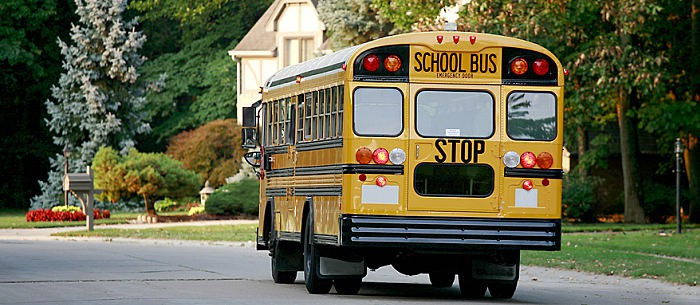What’s your after-school routine? At the end of the day, when your kids come crashing through the door, do they head straight for the playroom, wanting to leave the structure of the day behind them? While a free-for-all might seem in order — after all, they’ve been cooped up all day — do you then have a tough time reigning them in for chores, homework, sports or music practice? How do you offer a balance between free play and getting things done?
Kelly Burstow, a mother of four and founder of Be A Fun Mum, notes, “Having an after-school routine is about finding the balance between following a system and winding down after school.” Leigh Ann Torres, founder and blogger at the parenting site Genie in a Blog, concurs. “When my twins first started kindergarten (they’re now in first grade), we went through several options until we found the right fit. Kindergarten was a huge adjustment for them. They were tired and happy to be home, which usually translated into extreme playfulness, but they eventually crashed in a fit of crankiness and exhaustion.”
Torres points out that her twins were overwhelmed by their new schedule and once over-tired, were unable to settle into a productive routine for the rest of the afternoon. She had to find a routine that would serve both her needs and her kids’ needs. “Consistency is key,” she says. “There’s a reason that kids have the same schedule in school every day. And while the monotony of “Dora the Explorer” may drive me batty, I know the show is structured around routine and consistency, and kids thrive on that. Devising the routine is usually the hardest part for me, but once I find one that works, I can stick to it.”
Burstow outlines six steps she follows to create the ideal routine for her family:
- Smile Wide
Greet your kids with wide smiles. The after-school routine “starts the moment you see their faces after school,” says Burstow. Set the tone with a smile.
- Have a “School Station”
Set up an easy-to-use place for your kids to dump their backpacks, place their shoes and hang up their coats when they walk in the door. Burstow has a rubber tub for each child in the garage for backpacks and a shoe rack just for school shoes.
- Give Them Food!
“Kids are usually hungry after school, so a substantial snack is helpful,” Burstow suggests.
- Homework Time
After their snack is a great time for kids to do homework. Torres notes that her kindergartners did best when they went straight into homework after having a snack. But she believes that older kids may need a little “brain break” since their days are more intense. “Get kids to give feedback on their homework timetable and write up a general weekly plan they can tick off each day,” Burstow recommends. “Try new things to mix it up like writing out spelling words in salt on a baking tray instead of writing them out.”
- Play Time
Play is really important after school, to help kids burn off some energy and to give their brains a break. Kids can often find it easier to focus on homework after some playtime.
- Communicate With Your School
Reach out to your child’s teacher if homework is becoming a struggle or is negatively impacting your family life. “In my experience,” says Burstow, “teachers are fantastic in this regard and will have suggestions or even cut down the homework expectations.”
In addition to the above steps in creating your perfect after-school routine, Torres advises, “Take into account any after-school activities you may have to work around. Can they handle deviating from a specific routine one day out of the week for soccer practice? If not, you may have to work your whole routine around that to ensure your child isn’t thrown for a loop. It takes time and a little frustration, but trying different methods allows you to see what works best for your schedule, your home environment and your unique kids.”
Creating a successful after-school routine “is simply a matter of finding out what works best for your family,” Burstow adds. Torres agrees, adding, “Finding a good, effective after-school routine is pure trial and error. What works for one family isn’t necessarily going to work for another.”
Want some after-school activity ideas? Try these 101 After-School Activities for Kids.
Shanell Mouland writes for “Huffington Post,” as well as her own blog, Go Team Kate, dedicated to telling stories of the care and raising of her autistic daughter, Kate, and her super sibling, Grace.






